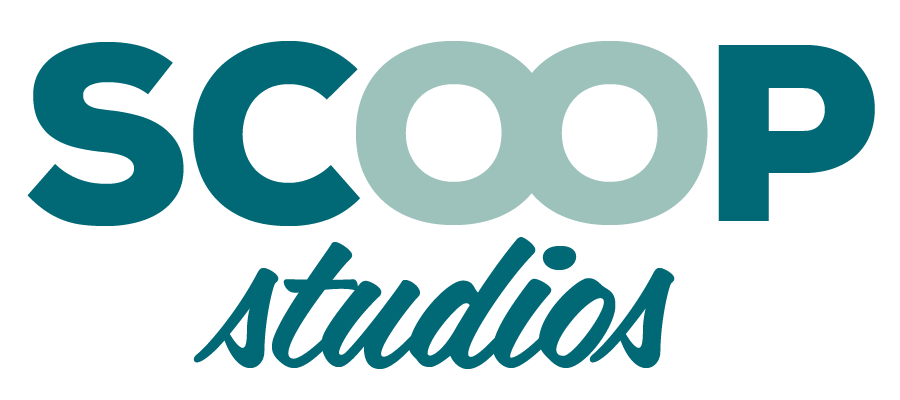Productivity. The nemesis of the self employed. I mean, we ALL want to be more productive on a daily basis…get more done in less time, increase our output and just crank out the work. But making that happen is easier said than done and it can be hard to know what productivity tactics are going to work best for us.
Picture this…you have an epiphany that you are not being as productive as you could be. So you decide that it’s time to take the bull by the horns and learn some real strategies to get yourself on track.
You hop on the internet, start googling and boom! There are a million awesome tips right there in front of you, so you just need to refine the list and find the right ones.
The next thing you know, you’ve been online for three hours and that to-do list hasn’t been touched. Turns out that researching being productive isn’t a very productive use of your time. Oops.
There are so many things that come at us during the course of day that it’s easy to fall down the rabbit hole. There are clients demanding your attention, a project you’ve been working on is riddled with problems, your VA needs help with stuff, you’re working on a new launch for your business that requires a ton of planning…and on and on and on the list goes.
And that’s not even taking into account the 42 other distractions in you have in your house when you work from home! (Laundry, anyone?)
So how do you get yourself not only on track, but keep yourself there consistently?
We’re breaking down our four favorite tactics for being productive to get you started on working through your to-do list. (And we use all of these on the regular!)
Productivity Tactic #1: Pomodoro Technique
This is a traditional productivity technique based around spending 25 minutes “on” and 5 minutes off for a number of cycles before taking a bigger break. The more cycles you do of being “on”, the longer you break for after each one, allowing your brain time to absorb new information and rest before tackling another task.
The Pomodoro Technique focuses on four key strategies:
- Work with time, not against it
- Eliminate burnout
- Manage distractions
- Create a better work/life balance
So why is it effective?
First, because it allows you to actually figure out how long something really takes. Being productive is an uphill battle when you are forever underestimating the amount of time you allot for a task. The to-do list never gets finished when you don’t have enough time to actually complete the work.
Plus, it cuts down on distractions. We’ve all found ourselves working on one thing but then taking “a minute” to answer an email or look at something online. 25 minutes is a reasonable timeframe to set aside *everything* else and just focus on the one task at hand.
There are even a number of apps that you can use on your computer/tablet/phone that have these pomodoro time breaks preprogrammed, such as Tomato Timer and Focus Time.
Productivity Tactic #2: Sprints
Sprints are a concept that originally started in the software and tech industry. The idea was to have a specified period of time (usually 30 days in the tech world) where all tasks related to a project are prioritized and then completed in their entirety before beginning the next task.
While the overall execution within a small business would likely look a little different, the concept is the same.
The key to ensuring a sprint is effective and executed properly is the planning. You need to look at all of the tasks and how long they will take.
Having everything laid out in a plan ahead of time means you have a holistic picture of everything that needs to be accomplished during your sprint. There are a ton of great sprint templates to be found online and using one may be a great way to help you get set up for your first sprint.
While these are traditionally a week or so, it’s often not possible for services businesses to abandon client work for a whole week of working on their business or something else.
The key is to take the concept and adapt it. We can do a sprint day, a sprint week with mornings or afternoons spent on the sprint, or even just a few sprint hours.
Of course you can do this to work ON your business, but one of my favorite things to do is use sprints for client work, especially bigger projects. The goal is to be focused on what you’re going to get done and make sure that as many barriers to your getting the work done are handled either before you start or before the next day’s sprint time.
Using sticky notes for all of the things you’re going to get done in your sprint is a very visual and effective way of keeping track of what you’re doing, what you’re currently working on and what you’ve completed.
There are these three buckets to put your sticky notes in: to be done, In progress/working on, and completed. The idea is to start one thing and complete it as entirely as you can before going to the next thing.
In the case of a solo biz owner you won’t have too many items in progress because you’ll be working on one thing at a time. Unless you hit a roadblock and need something from your client or team to move forward to completion.
Productivity Tactic #3: Batching Tasks
This tactic is all about getting a lot of similar tasks done at one time. The idea is that since you’re focused on one specific thing versus switching gears, you can get a lot of things done all at once.
The best/most popular example here is content creation – blog posts, social media, etc., setting up membership site pages, answering emails, recording podcasts, videos, editing videos, etc.
The reason batching can be so successful is because it allows you to immerse yourself in ONE thing at a time. Sure, you may have seven blog posts to write, but doing them all at once allows your brain to focus on the writing instead of trying to split focus on different tasks that require different parts of your brain.
Batching is also a way to make something that looks huge and daunting seem more digestible. Staring down a quarterly content plan can be completely overwhelming, but when you start listing things out by blog post, emails, social media, etc. it suddenly seems like it’s manageable.
Sure, it’s the same amount of work in the end, but your brain is less likely to freak out when it’s processing everything in smaller groups.
Another way batching can help is by minimizing mistakes. We all know what it’s like when we are jumping from one thing to another and back again throughout the day.
The chances of making a mistake become exponentially higher the more things we try to work on at once. The more you focus on one type of task, the more you increase the likelihood that things will be done right. Less mistakes equals less time going back and fixing things.
The goal with batching is to make sure you’re working on like tasks vs. any and all tasks on your to-do list. Often times, but not always, you’ll be doing this as an effort to work ahead and save time in the coming days/weeks.
Some other ideas for things you can batch:
- Creating graphics
- Setting up landing pages
- Project managing clients
- Accounting tasks such as invoicing and time tracking
- Documenting systems or processes
- Client check-ins or even calls (we love having “call” days)
Tactic #4: Eat the Frog
We all know the feeling of starting the week off with that one dreaded to-do on the list. That one thing that you just cannot get motivated to do because it’s boring, or hard, or just seems too overwhelming.
And we’re probably all guilty of humming and hawing so much about it that more time is actually wasted stressing than it would have taken to just do the task and get it over with. (Am I right?!?!)
The ‘Eat the Frog’ tactic tells you to do the most dreaded thing at the start of your day. Sounds horrible, right?
While this may initially make getting started on work a bit of a drag, by getting your least favorite task out of the way, you will then have momentum to do the rest of the day’s tasks while feeling like you got a nagging item done.
Even if the dreaded item isn’t a huge item, oftentimes the energy drain that comes from them is as heavy as having a big task on your plate. So getting that done first thing sets you up for a productive day and stable energy knowing that the frog has been eaten.
Some days this task may take you 15 to 30 minutes and other days it may be longer, it all depends on the task. If the dreaded task is too daunting, break it up into baby frogs (tadpoles?) to be attacked over a series of days.
While starting your week off eating the frog may not sound very appealing, there’s also an opportunity to really look at your frogs and see if you can figure out what makes it a frog in the first place. Is it boring? Do you find it too hard? Does it take up too much time?
By identifying your frogs, you can take the time to consider if there is anything you can do to make that frog more palatable in the future.
Whether you decide to try out Pomodoro, or you think eating the frog is the way forward, being more productive means a better run business. There is no one way to being productive, so the only way to know what works is to be willing to try different tactics and refine your very own method.
[embed_popupally_pro popup_id=”12″]


